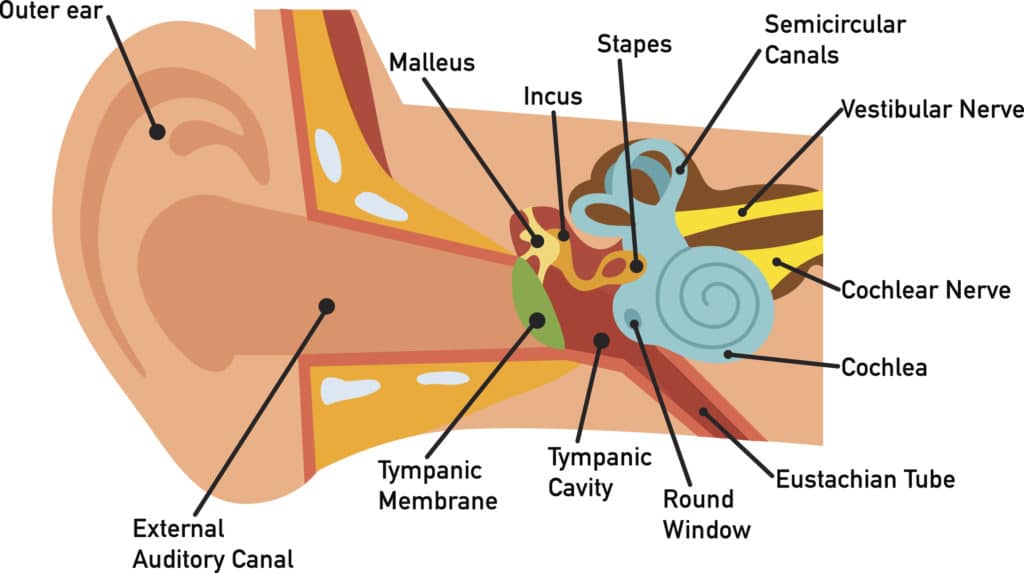How You Hear
Your ability to hear doesn’t just happen. In fact your hearing occurs in a series of mechanical and electrical processes. First, sound waves enter your outer ear and travel through your ear canal. Your ear canal contains skin, bone, tiny hairs, and earwax. Glands within your ear canal help to produce earwax, which is your ear’s natural way of cleaning itself. Earwax catches dirt and debris that don’t belong in your ear and then naturally runs out of your ears taking the invading particles out with it. Producing too little or too much earwax can be problematic as it could interrupt your ear’s natural cleaning pattern and could make hearing difficult. Consult your Audiologist for recommendations on dealing with earwax production.
Sound is made of sound waves. When sound waves reach your eardrum, they vibrate and stimulate the bones in your ears. These bones are called ossicles. They consist of the incus, malleus, and stapes bones and are some of the tiniest bones in your body. Sound waves hit these bones and cause a mechanical reaction as the bones pump sound to the cochlea. Damage to these bones from a head injury, medications, or medical conditions can cause a conductive hearing loss.
Once the sound waves reach your cochlea they are converted into electrical energy. The cochlea is the main hearing organ in the inner ear. The cochlea consists of tiny hairs, known as stereocilia, that vibrate when sound passes through. These tiny hair cells help determine at which frequency you hear the sound. Once sound passes through your cochlea, it goes to the auditory nerve. From the auditory nerve, it travels up into your brainstem where it is processed and interpreted by your brain as sound. Damage to the tiny hairs in the cochlea or to the auditory nerve can cause a sensorineural hearing loss.

